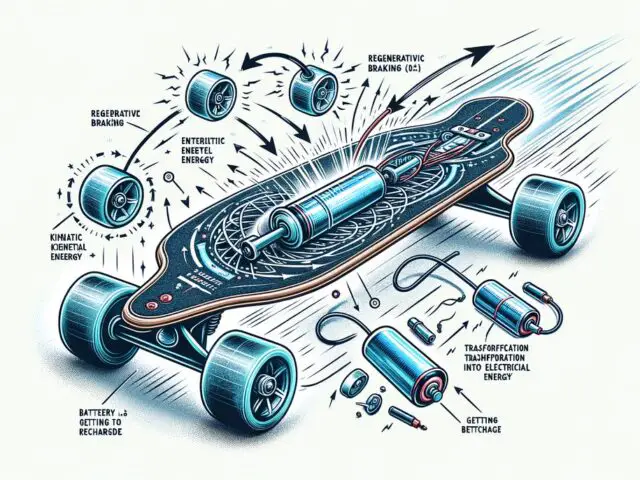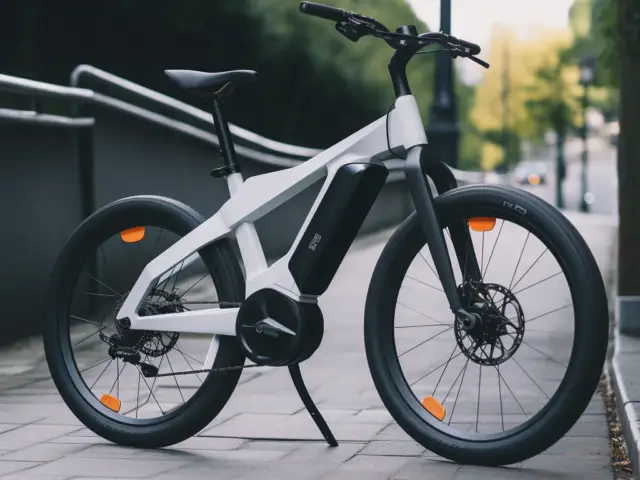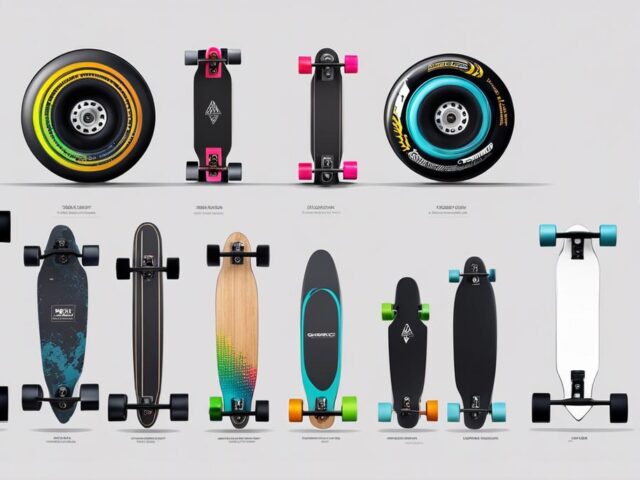As we careen into an era where technology sits at the forefront of almost all aspects of our lives, not least in the realm of personal transportation, e-bikes and their allied technologies demand our attention. These modern vehicles, powered electrically, bring with them a wave of innovations, of which Collision Avoidance Technology is a salient feature. Steering the wheels of safety, this promising technology serves as an vigilant eye on the roads, potentially preventing unfortunate accidents. This exploration delves into the fundamental aspects of e-bikes and the workings of collision avoidance measures. It underscores the importance of these technologies, evaluates the existing systems in place, and throws light on the opportunities and challenges that lie on the horizon.
Understanding E-Bikes and Collision Avoidance Technology
Technology is an incredible thing, isn’t it? Imagine a time where your e-bike can anticipate potential collisions and take the necessary measures to prevent them. Sounds like science fiction, right? Well, folks, welcome to reality! That’s right, collision avoidance technology is here, and e-bike safety has never looked so promising.
For starters, what is collision avoidance technology? At its core, it involves a network of sensors working overtime to detect vehicles, people, or obstacles that come a bit too close for comfort. But it’s not just about spotting these potential dangers; it’s a step beyond that. This type of technology has the delightful ability to respond accordingly to the imminent risks, therefore helping to prevent that potentially nasty tumble.
The nitty gritty of how it works is genuinely fascinating. Picture a system of lidar sensors, radar, and cameras meticulously scrutinizing the e-bike’s path, creating in effect, a “safety bubble.” When a potential threat breaches the bubble, shivers are sent down the digital spine of the e-bike, triggering a response.
Is it a pedestrian walking out in front while the e-bike is cruising at significant speed? No problem! The system will activate the brakes, reducing the bike’s velocity or bringing it to a complete halt.
Think of it as having an ever-vigilant co-pilot constantly scanning everything that happens on the road, predicting potential dangerous situations, and taking active measures to avoid them. Isn’t that a nice breath of fresh air?
There’s more. Collision avoidance technology also lends itself nicely to the integration of haptic feedback. What this means is alerts can not only be visual or auditory, but also sensory. Imagine getting a tingling buzz in your hands as a signal to refocus your attention. Talk about an essential addition to any bike, especially for those rides where the serene landscapes can be oh so distracting!
Upgrading to an e-bike armed with collision avoidance technology is not just splurging on a tech-bauble. It’s all about ensuring that each ride is safer, less stressful, and more enjoyable. It’s about keeping yourself, your loved ones, and others on the road safe—a noble cause worth celebrating.
The integration of this type of technology into the e-bike sphere is not just a mere enhancement, folks. It’s been a game-changer. Collision avoidance relieves some of the pressure from riders while redefining the limits of what it means to have control over two-wheeled travel. And when technology and safety blend so seamlessly, we are given more liberty to turn our attention to what’s truly important: the sheer joy of the ride.

Photo by lucabravo on Unsplash
The Importance of E-Bike Collision Avoidance
Nothing quite compares to the exhilaration that comes from zipping around on an e-bike. These motor-assisted two-wheelers have made a significant impact on the way we commute, exercise and experience the world around us, revolutionizing the field of personal transportation. With so much excitement around speed and power, the aspect of safety often takes a backseat. However, advancements in collision avoidance technology are now bringing this crucial topic to the forefront.
Known for its practical use in modern vehicles, the implementation of collision avoidance technology in e-bikes has drastically amplified the safety quotient. Although previously detailed descriptions have touched on the baseline functionality and benefits of this technology, there’s much more merit to be explored.
At its core, collision avoidance technology acts as an additional set of eyes on the road, intensifying your safety net while riding an e-bike. It continuously monitors the setting, keeping an eye out for potential hazards that you might miss. Applying brakes in a high-risk scenario can be an intense and timely process. This technology takes charge in such situations, making split-second decisions to avert accidents.
Furthermore, consider the impact of this technology on night riding. Visibility decreases significantly in low light conditions, making it challenging to spot potential dangers. Collision avoidance systems are equipped with infra-red and radar technologies, ensuring a safe ride, no matter what time of the day.
The use of haptic feedback in collision avoidance further complements the rider’s spatial awareness. That said, it’s noteworthy to emphasize how such feedback goes beyond mere vibration alerts. From adjusting the intensity of the haptic vibrations to warning signals, these feedbacks can be customized to match an individual rider’s preference. This level of personalization significantly reduces the chances of overreaction, further enhancing control and stability on the road.
The conversation around collision avoidance technology would be incomplete without discussing the rider’s experience. Forget any notions of a robotic, disconnected riding sensation. This tech advancement exudes an organic, intuitive feel, effectively transforming the e-bike into an extension of the rider. It assists in making you more attuned to your surroundings, strengthening your bond with the bike and enhancing your overall riding experience.
The importance of collision avoidance technology in e-bikes is undisputable, considering its pivotal role in ensuring safety and advancing rider experience. Yet, it is necessary to remind everyone that the innovative tech upgrade isn’t a replacement for essential safety practices and road knowledge. It serves as a vital addition, offering an added layer of protection and peace of mind while you’re embracing the joy that comes from riding an e-bike.

Evaluating Different E-Bike Collision Avoidance Systems
Delving deep into the heart of the e-bike world, one must not forget to examine the cutting-edge e-bike collision avoidance systems currently making waves on the market. Not simply a casual upgrade, these marvels of modern tech are a tribute to innovation, dramatically transforming our pedaling pursuits by adding that essential layer of security.
Unveiling the top contenders on this front, the Bosch Kiox Controller emerges as a brilliant safety enhancement. Working in conjunction with the Bosch eBike ABS system, the Kiox relays feedback and alerts through a vivid display. This immensely simplifies riders’ processing of critical information, heightening responsiveness, and mitigating potential dangers.
A second trailblazer is the Garmin Varia™ RTL515. This rear-view radar and tail light singles out vehicles approaching from behind (up to 153 yards away) and presents this information on a connected device or Edge® cycling computer. This seamless assimilation of bike and tech empowers cyclists to maintain situational awareness without compromising attention to the task at hand: smooth, enjoyable riding.
Hitting a high note on the innovation scale, the Hexagon Camera Light is a groundbreaking hybrid of necessity and tech. With a rear-camera view transmitted directly to your smartphone, Hexagon allows riders to surf through traffic with an omniscient-like field of vision. Additionally, it integrates turn signals and stoplights, often making it the perfect companion for city traffic and dimly lit trails.
On the radar, too, stands the SmartHalo 2 with its cutting-edge anti-theft alarm, front light, and intuitive navigation. The show-stealer, however, is the Personal Assistant feature that alerts the rider to incoming calls or weather updates. This multitasker par excellence is the go-to gadget for cyclists looking to maintain connectivity without losing their grip on safety.
Finally, crowning the list of top collision avoidance systems, we have the Lumos Matrix helmet. A stellar combination of practicality and innovation, the Matrix helmet features integrated LED lights that run animations and signals, customizable through an IOS/Android App. Furthermore, a built-in accelerometer automates brake lights, providing fellow road users ample warning during sudden halts.
These systems, boosting the safety profile of e-bikes, are a testament to the vibrant progression of the e-bike world. They serve as intuitive co-pilots, facilitating control and promoting safe, thrilling rides. So, whether you are a commuter looking to brave the city hustle, or an adventurer pedaling down untraveled trails, remember to keep these lifesaving gadgets at the top of your upgrade list. Just bear in mind, tech compliments safety, it doesn’t replace it. Happy riding!

Challenges and Future Trends in E-Bike Collision Avoidance Tech
As e-bike tech continues its upward trajectory, collision avoidance technology is undoubtedly a hot topic. Yet, even with such promising prospects, it’s not without its challenges. The e-bike community has closely observed these issues and the solutions currently being explored. So let’s take a more in-depth look into these critical areas and what the future of e-bike collision avoidance tech might hold.
Primary among these challenges is the functional accuracy of the systems. A fine line must be tread between avoiding “over-sensitivity” that could trigger unnecessary brakes or turns, and ensuring an adequately responsive system that effectively aids collision prevention. It’s a careful balancing act, one that has every e-bike tech enthusiast whipping out their note pads and calculators.
Next up, let’s chat about visibility. While collision avoidance tech can improve an e-bike’s safety profile, it’s often hard to integrate it without compromising the bike’s sleek design. Let’s face it, nobody wants a super-safe e-bike that looks like a science project gone wrong! Thus, the aesthetic integration of this tech into the e-bike’s design continues to be a crucial work in progress.
Battery life is another hurdle. How do we ensure these tech-powered systems won’t drain the battery life of the e-bike, becoming a hindrance rather than an asset? Scaling the energy consumption of these systems, while maintaining their effectiveness, remains a hot topic for both riders and tech developers.
Data privacy is an issue that affects all tech-integrated products, and e-bikes are not exempt. Ensuring that the user’s private information remains secure while using this tech is a challenge requiring careful consideration.
Turning our sights towards the future, there’s substantial anticipation about integrating AI with collision avoidance systems. The concept of having an e-bike smart enough to “learn” over time and adjust its responses based on the rider’s specific habits and cities’ unique traffic patterns? Yes, please! It’s a thrilling idea that would revolutionize the future of e-biking safety.
Taking a leaf out of sci-fi novels, holographic technology could be another revolutionary addition. Imaging having a projected display giving real-time updates about the surrounding traffic and possible collision points. Intriguing, right?
In the end, we are standing at the precipice of what promises to be an era of unprecedented advances in e-bike safety. It’s like being the front row audience to a thrilling play, embedded with twists, turns, and ground-breaking tech. The challenges faced by e-bike collision avoidance technology are indeed valid concerns. But, seeing the solutions on the horizon, the future looks both exciting and inspiring.
Remember, safety in e-biking isn’t just about the bike, the tech, or the rider. It’s about how all of this integrates into one seamless and synergistic experience. Here’s to the safe and futuristic e-bike rides ahead!

In the increasingly tech-driven world, e-bikes are racing to the forefront of personal transportation. Their immense potential for urban commuting and off-road adventures is matched by growing safety concerns. However, with the advent of Collision Avoidance Technology, a new revolutionary stride towards safer roads has been taken. Despite existing challenges, the future for this technology appears vibrant and promising. As we continue to push the boundaries of electric mobility, there will undoubtedly be leaps in collision avoidance systems, enhancing safety for all on the roads. In the mingling of technology, efficiency, and safety, e-bikes with Collision Avoidance Systems are becoming not just an option, but a necessity for the responsible rider.
Helpful Links
For all your RC Questions, Click HERE
If you are interested in RC cars and trucks, RC World has you covered.
For RC boats and watercraft, check these articles out.
For all your RC Airborne endeavors, we have everything you need.
Electric Skateboards: Conquering Speed Racing
As technology continues to evolve and permeate every facet of our lives, so too has the realm of skateboard racing, sparking intrigue and passion in enthusiasts and hobbyists…
Mastering Regenerative Braking on E-Skateboards
Regenerative braking is a fascinating blend of innovation and practicality, seamlessly integrating into the world of electric and hybrid vehicles as well as electric skateboards. It represents a…
9 Best Motor Powers for Off-Road Electric Skateboards
Embarking on an exhilarating journey through untamed landscapes requires not just courage but also the right equipment. Off-road electric skateboarding is a pursuit where the synergy between man…
Revolutionizing E-Bikes with Wireless Charging Technology
As technology continues to advance, we are constantly finding new ways to make our lives easier and more efficient. One area that has seen significant progress is the…
Wheel Size and Your Electric Skateboard: What You Need to Know
For the uninitiated, the wheel size of an electric skateboard may seem like a minor detail. However, for the avid hobbyist or professional rider, it’s a crucial factor…
RC Cars in 2021: Are They a Waste of Money or Not
RC cars tend to provide lots of fun and excitement to the people of all ages and experience levels. However, sometimes the people who are looking to make…
Off-Road E-Skateboarding Guide
Embarking on an adventure into the wild yonder, electric skateboarding presents an electrifying fusion of technology and thrill. But when the beaten path calls for an off-road journey,…
Six Reasons to Ride a Fat Tire Electric Bike
In an era where practicality, health, and sustainability are at the forefront of our minds, the fat tire electric bike has emerged as an exhilarating solution to all…
Essential Safety Gear for Electric Skateboarding
Electric skateboarding has grown tremendously in popularity, surfacing as an exhilarating sport as well as a handy transportation method. It offers an alternative to traditional skateboarding, and is…










